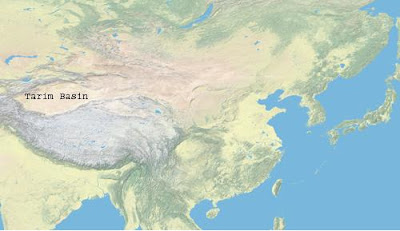Terrorism and Southeast Asia
Since the advent of the September 11 attacks, Southeast Asia has often been warily looked to as a cauldron of quietly (and sometimes not so quietly) festering terrorism. A few groups are notable here - Abu Sayyaf, a group operating out of Southern Philippines, which in February 2004 destroyed a ferry and killed 116 people; Jemaah Islamiyyah (JI), responsible for the Bali Bombings of October 2002. In truth, however, terrorist cells in Southeast Asia are not about to form a central, unified movement, as this article from Reuters suggests.
Of course, we do not any longer need to be banged over the head with "Not all Muslims are terrorists." For what it's worth though, we might note the diverse nature of Islam in Southeast Asia, their opinions as diffuse as those of Christians in the West -
For one, in all areas of the Muslim world there is a distinction made between what is called orthodox Islam and “folk Islam”(the form of Islam which blends ancient forms of ancestor worship/animism with orthodox beliefs), and the same holds true of Muslims in Southeast Asia. It is possible to perceive this divide geographically: orthodox Muslims would tend to be centered in coastal and urban areas, with more exposure to foreign Muslim traders and missionaries; followers of “folk Islam” would tend to be located in rural villages and settlements farther from the more cosmopolitan centers of trade and commerce (Means, p25).
"Folk Islam" tends to be monistic, with a close identity between the material and the spiritual stressed. The resultant concept of God tends to be all-inclusive. God is not thought of so much as a personal being separate from his creation, but rather as the aggregate of all supernatural forces, a godhead, which can be seen in many different ways.
We see the tension between strongly orthodox Muslims and "folk" adherents in Java, where it is expressed in a contrast between the santri and the Javanists respectively. Santri refers not only to a person who is consciously and exclusively Muslim; it also describes persons who have removed themselves from the secular world to concentrate on devotional activities in Islamic schools. In contrast with their Mecca-oriented philosophy, there is the current of Javanism, an amalgam of animism, Hindu-Buddhist, and Islamic – especially Sufi - beliefs. This loosely organized current of thought and practice was legitimized in the 1945 constitution, and even presidents such as Suharto (1967-98) have counted themselves among its adherents. Javanism is generally characterized as mystical, and some varieties are concerned with spiritual self-control. And although there are many varieties in circulation, Javanism often implies pantheistic worship because it encourages sacrifices and devotions to local and ancestral spirits. These spirits are believed to inhabit natural objects, human beings, artifacts, and grave sites of important Muslim saints. Illness and other misfortunes are traced to such spirits, and if sacrifices or pilgrimages fail to placate angry deities, the advice of a healer is sought. Ultimately, the local term for Javanism, kebatinan, connotes a turning away from the outward gaze of orthodox Islam, and moves toward a more internalized universalism. It aims toward eliminating the distinction between the universal and the local, the communal and the individual.
In Indonesia, there also exists a conflict between traditionalist and modernist Muslim outlooks, where traditionalists have generally rejected the modernists' interest in absorbing educational and organizational principles from the West. Specifically, traditionalists tend to be suspicious of modernists' support of reformist schools that include the teaching of secular topics alongside religious ones. The modernists' goal of taking Islam out of Islamic boarding schools and carrying it to the people is opposed by the traditionalists, because it threatens to undermine the authority of the religious leaders. Traditionalists have also sought, unsuccessfully, to add a clause to the first tenet of the state ideology, in order to require all Muslims to adhere to the sharia. On the other hand, modernists have accused traditionalists of escapist unrealism in the face of change; some have even hinted that santri harbored greater loyalty towards the followers of Islam than to the secular Indonesian state.
Lastly, I would argue that while conflicts in this region are oftentimes defined as occurring across religious lines, creating an impression of dangerous religious fervor, the truth of the matter is that religion remains only a tool, the basis for a struggle which really has its origins in something else. In Maluku (Indonesia), where Muslims and Christians clash today, it is said that a combination of weakened traditional social structures, horizontal equalities (historical inequalities between Christians and muslims, and the Islamic-influenced policies Suharto's New Order), as well as the proximate causes of Indonesia's economic crisis and the trends towards decentralization and democratization, has formed great incentive for people to mobilize along ethnic and religious lines (Brown). It may therefore be said that supposedly religious conflicts will always remain local, and the domino theory cannot apply.
Works Cited
1. Gordon P. Means, Political Islam in Southeast Asia (Lynne Rienner Publishers, Inc., 2009)
2. Graham Brown, with Christopher Wilson and Suprayoga Hadi, “Peace and Development Analysis In Maluku and North Maluku”, Overcoming Violent Conflict, Vol. 4
- Submitted by R. Whang (CAS '11)

Comments
Post a Comment
We follow the House Rules as outlined by the BBC here.